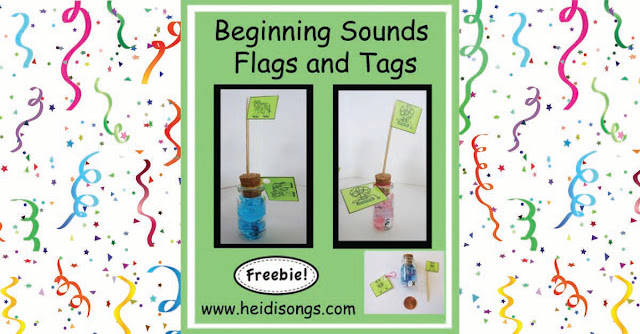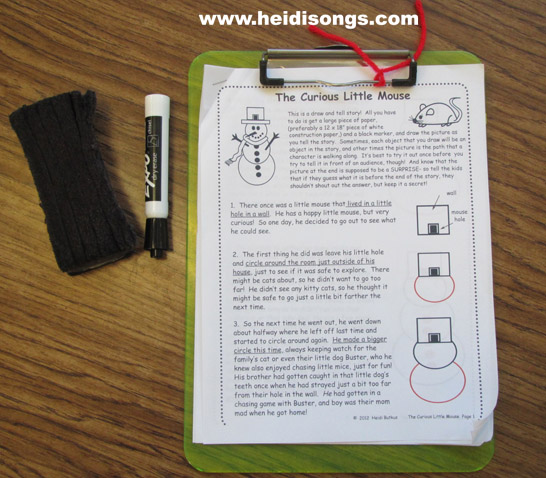Teaching Phoneme Segmentation: Separating Sounds in Words (Freebies!)
Have you heard the news? We've Moved to HeidiSongs.tv!
Our new website features an online video streaming service, updated blog posts at Heidisongs.blog, and a wealth of fresh resources designed to make learning even more fun and engaging.
You can also continue shopping for our educational products there and at our Teachers Pay Teachers store!
Head over to HeidiSongs.tv now and explore all the exciting new features.
See you there!
__________________________________________________________________________
Teaching children to pick out all of the phonemes (or sounds) in a given word can be tricky! This requires good listening skills and well developed phonemic awareness in general. For some children, mastering phoneme segmentation can seem just about impossible! Here are some teaching tips that have worked for me in the past.
* The best advice I can give is to practice segmenting words with a designated MOTION for a short time every single day with your whole class. Even just one or two minutes per day will help! Look for suggested motions on this post. There is also a downloadable list of words to use, plus a homework sheet that you can download here.
Here is where you can get another word list for practicing words with two, three, and four phonemes.
And here is another post with lists of words with four, five, or six phonemes.
* Give kids beads to slide down a pipe cleaner as they segment the word. I made these "Segmentation Sliders" out of pipe cleaners and Push-Up Rings that I found here. My students absolutely LOVED doing this in small groups and BEGGED for them every time they thought I might give in! It was totally worth making them! I also found these same rings on Amazon! Just search for "stringing rings." (They sure look like Froot Loops!) They come in different shapes as well, so you could also use them for patterning and sorting, etc, and they fit nicely on pipe cleaners, so the children would be using their fine motor skills as well- always a plus!
* Have children practice segmenting words by pulling stretchy toys apart and letting them snap back together when they say the whole word. My students LOVED this! Hint: Practice first with empty hands, and then switch to holding the stretchy toys.
* Slide chips or tokens into Elkonin Boxes as kids segment the word. Elkonin Boxes, also known as "Sound Boxes," were developed by a Russian Psychologist named D. B. Elkonin. Click here for a free download of some Elkonin Boxes made by ME and a complete explanation of how to use them.
Here is how to use them:
-Give each child in your group a sheet with the boxes on it and some tokens to push.
-Say a word, and the children just slide one token into each box for each sound they hear.
-When your kids get good enough at this, give them the sheet like the white one below, so that they have several choices of how many phonemes there might be in the word you call out. So if you call out a word with five sounds in it, then it will be their job to find all of the phonemes in the word and count them, and then figure out which of the boxed rectangles on the page to use.
-The next step is to slide plastic letters or letter tiles into the boxes.
-The last step is to write the letters in the boxes.
* Give a struggling child a hand mirror and have him or her look at it while he says the word. Have him say the word quickly, and then again in slow motion, and then like a robot- one sound at a time. His lips should be doing the very same thing each time.
* Give the child a phonics phone at the same time as the hand mirror, and have him or her listen carefully while saying the same word you said. The phonics phone amplifies the sound in the child’s ears.
* To help add a visual cue to this VERY auditory skill, try touching your finger to your lips each time you say a word that the child is supposed to segment. I trained my kids to watch my lips and then say the same thing back... but slowly. I kept repeating, "Watch my lips... (and then I said the word.) I say to the child, "Watch my lips as I say the word slowly. Now you say the word. Are your lips doing what my lips are doing? If not, then you are not making the right sounds.
This worked GREAT- but- I needed to "wean them off" of that practice in order for them to do well on their assessments. We were not allowed to add in extra instructions like that when testing, so this threw many of the struggling children off when they were tested, unfortunately.
* Sometimes recording the child’s own voice saying the word to segment helps. First have him or her say it the normal way, and then have him say it again "in slow motion.” If the child is listening to HIMSELF speak, the "light" might go on! I use an iPad or iPhone to make recordings.
* Double check whether or not the children really understand the directions. The academic vocabulary we use when we give the instructions is sometimes a little above their heads. One thing that helps is giving each phonemic awareness skill a specific motion and sticking with that movement each time you teach it.
Make sure you teach the academic vocabulary that is in the question! Do they know what the word "segment" really means? Try adding a unique motion to each phonemic awareness skill to help keep them separated in their minds. Then USE that same motion consistently.
For example, each time we try to find ending sounds, we say the word and then PUNCH the ending sound hard!
However, when we try to find the middle sounds, we "roller coaster" the word every time. (See photo.) The middle sound is always at the top of the roller coaster.
When we segment the word, I say, "Tell me all of the sounds that you hear in the word, ____." You can have them pull their hands apart as they segment it, as if they were pulling on a giant rubber band.
We switched to a different motion halfway through the year to try to put some novelty into the lesson, because there were children that weren't getting it that seemed to be tuning me out. So we slid our hands down our arms from the shoulder to the hand, as I described before.
* Make SURE that you do NOT always stick with three sound words (like CVC words) for a very long time, or your students may begin to expect that all words will have just three sounds!
* Get parents on board if you can. I have included a downloadable sheet with words to practice on. It also has a homework sheet that I developed. It is very simple; kids are supposed to practice the words that you give them on a cover sheet (you'll have to pick the words that you want that week yourself and write them on some kind of cover sheet) and then draw a star or happy face in each box after they try to segment them for an adult. You can download my editable cover sheet for my homework on this blog post here.
* Tip: Figure out how the question is phrased on your phonemic awareness tests, and use that same exact phrasing when you teach. That way, when it is time to test, there should be fewer surprises. If there are sample questions, use the hand motions that you always practice with when cueing the children on those samples. That will help them follow your directions.
I believe that the main "take away lesson" for me as a teacher is that the more that the child struggles to learn, the more important it is to keep the academic vocabulary (and gestures!) that you teach the skill with AND the testing vocabulary IDENTICAL. This will help your low students do the very best that they can on their tests! That way, they can feel GREAT about their results, and YOU can get the credit for being the good teacher that you are!
*****
If your students are working on sounding out words, try the sound blending songs from our Word Family Songs!! They work REALLY well for teaching children to sound out words!
Here are some other blog posts of mine you might find helpful on this topic!
-Heidi :)
----------------------------------
Follow me! Did you enjoy this post? Do me a favor and share it with your friends! And follow this blog by signing up for my email updates here, or follow on Bloglovin', or follow me on TPT! I'm also on Pinterest, Facebook, Twitter, Instagram, Google+ and YouTube, too! Don't forget to sign up for our email newsletter for special deals and promo codes that you won't find out about anywhere else.



























